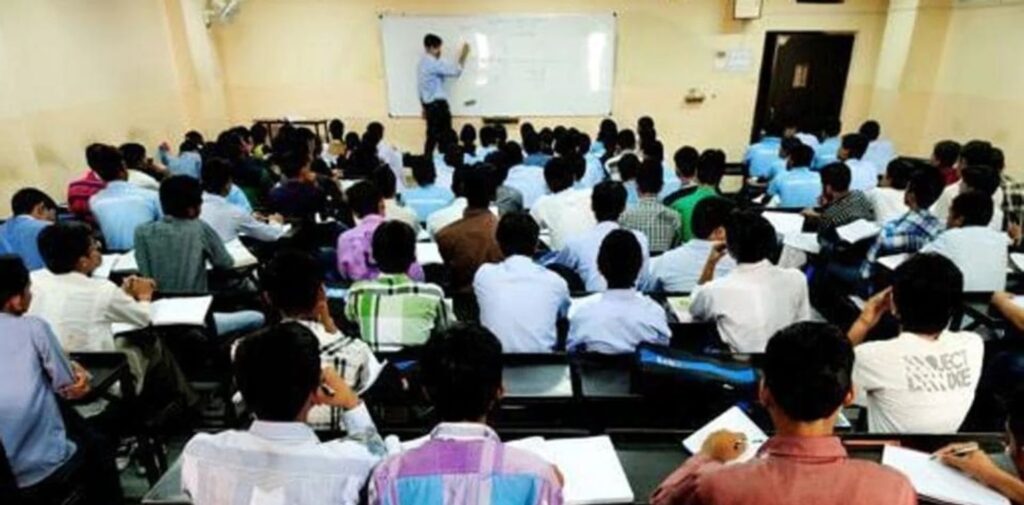The city of Kota, nestled in Rajasthan, has grown from a small town to a massive educational hub, often referred to as the coaching factory of India. With an annual turnover of over ₹12,000 crore, it is home to thousands of students from across the country who come with dreams of cracking the prestigious IIT-JEE, NEET, and other competitive exams. Students, often barely in their teens, spend an average of ₹3 lakh per year, with ₹1 lakh solely dedicated to coaching fees.
While Kota promises success and is hailed as the place to be for aspirants, beneath the surface lies a deeper, more troubling narrative. The industry, despite its financial success, seems to focus more on quantity rather than quality, leading to a culture of rote learning.
The Financial Burden on Families
Every year, thousands of students flock to Kota, chasing a dream that has been marketed as the ultimate pathway to success. Families from all over India pour their life savings into coaching fees, hostel accommodation, food, and other expenses. For a middle-class family, ₹3 lakh is a significant investment. Many even take loans to ensure their children can attend these renowned institutes. While some students undoubtedly succeed, the financial strain on families who cannot afford failure is immense. What Kota’s coaching centers offer is not an education but a lottery ticket, where the odds are far from favorable.

The coaching institutes are more focused on enrolling as many students as possible. Their business model thrives on numbers rather than outcomes. It is not unusual to see classrooms crammed with hundreds of students, where personalized attention is an impossibility. In these environments, students are treated as mere statistics—potential ranks in the next exam rather than individuals with unique needs.
Rote Learning Over Conceptual Understanding
The heart of the problem lies in the teaching methodology adopted by many of these coaching institutes. Rather than fostering a deep understanding of concepts, the primary focus is on rote learning. Students are given stacks of notes, formula sheets, and previous years’ question papers, all designed to help them memorize rather than understand. While this may lead to short-term success in exams, it does little to cultivate real knowledge or intellectual curiosity.
This emphasis on rote learning is a systemic issue. The competitive exams themselves often reward students for quick recall of information rather than their ability to apply concepts to real-world problems. The pressure to perform well in these exams forces students to memorize vast amounts of information, without truly grasping the underlying principles. This creates a generation of students who are adept at cramming but lack critical thinking skills.
The Mental Health Toll
Beyond the financial and educational implications, the Kota coaching industry is notorious for the toll it takes on students’ mental health. The pressure to perform is immense, and the consequences of failure are severe. Kota’s coaching centers are known for their rigorous schedules, often running classes for 10-12 hours a day, leaving little time for students to unwind, relax, or pursue hobbies. For many, failure to meet the expectations set by these institutes and their families can lead to severe mental health issues, including anxiety, depression, and in tragic cases, suicide.

A significant portion of students in Kota feel isolated, far from home, burdened by expectations, and trapped in a system that offers little room for individuality or personal growth. The pressure to succeed at any cost often overshadows the importance of well-being. In the race to the top, the emotional and psychological health of students is sidelined, and this has catastrophic consequences. Despite several measures introduced by the government and institutes, suicides in Kota continue to make headlines, showing that the mental health of students is still not a priority.
Coaching Centers as Profit-Making Machines
What started as a noble initiative to help students crack tough entrance exams has now transformed into a profit-driven industry. Many of the top coaching institutes in Kota are backed by corporate giants, with their primary objective being to generate revenue. The business model is simple: attract as many students as possible, offer one-size-fits-all courses, and churn out as many successful candidates as possible. But what happens to the rest?
The success rate in these exams is minuscule. For example, in the IIT-JEE exam, fewer than 2% of the total aspirants make it to the prestigious IITs. Despite this, coaching institutes boast about their top rankers in flashy advertisements, using them as marketing tools to attract the next batch of hopefuls. What they conveniently ignore are the thousands of students who either drop out, fail to clear the exams, or suffer from the immense pressure placed upon them.
The cost of failure is borne by the students and their families, while coaching institutes continue to profit. The industry thrives on the aspirations and insecurities of students, creating a vicious cycle where students believe they must join these centers to succeed, while the centers continue to focus on quantity rather than quality.
Lack of Innovation in Teaching Methods
Despite the staggering fees, the teaching methodologies employed by most coaching institutes in Kota remain outdated. The focus is on completing the syllabus as quickly as possible, with little attention given to interactive learning or fostering creativity. Classes are often lecture-based, with students passively absorbing information rather than engaging with the material.
There is a glaring lack of innovation in the way these institutes approach education. With the advent of technology, one would expect these centers to incorporate digital learning tools, personalized learning paths, and other modern teaching methods. However, most institutes continue to rely on the same methods they have used for decades, further reinforcing the culture of rote learning.
The real purpose of education should be to foster curiosity, creativity, and critical thinking. Unfortunately, the Kota coaching industry seems to have lost sight of this. By prioritizing exam success over true education, these institutes are failing to prepare students for the challenges they will face in the real world.

The Need for Reform
Kota’s coaching industry is in dire need of reform. The first step is to shift the focus from quantity to quality. Smaller class sizes, personalized attention, and an emphasis on conceptual understanding over rote learning are essential. Coaching institutes need to recognize that their responsibility goes beyond simply helping students pass exams—they must also prepare them for life beyond these exams.
Moreover, there needs to be a greater focus on mental health. Students should be provided with counseling services, stress management workshops, and a more balanced schedule that allows time for relaxation and extracurricular activities. The culture of relentless pressure and competition must be replaced with one that values the holistic development of students.
The education system, too, must play its part. Competitive exams should be designed to assess a student’s understanding of concepts rather than their ability to memorize. This will encourage both coaching institutes and students to focus on deeper learning, rather than cramming for exams.
Conclusion: Kota Coaching Industry
The Kota coaching industry may boast impressive financial figures and a few top rankers, but its real cost is borne by the thousands of students who are subjected to a system that values rote learning over real education. For this industry to truly serve its purpose, it must undergo a fundamental shift in its priorities. Education is about more than passing exams—it is about fostering curiosity, developing critical thinking, and preparing students for the challenges of the real world. Until this shift happens, Kota’s coaching centers will continue to prioritize profit over the true purpose of education, leaving behind a generation of students who are ill-prepared for the future.




